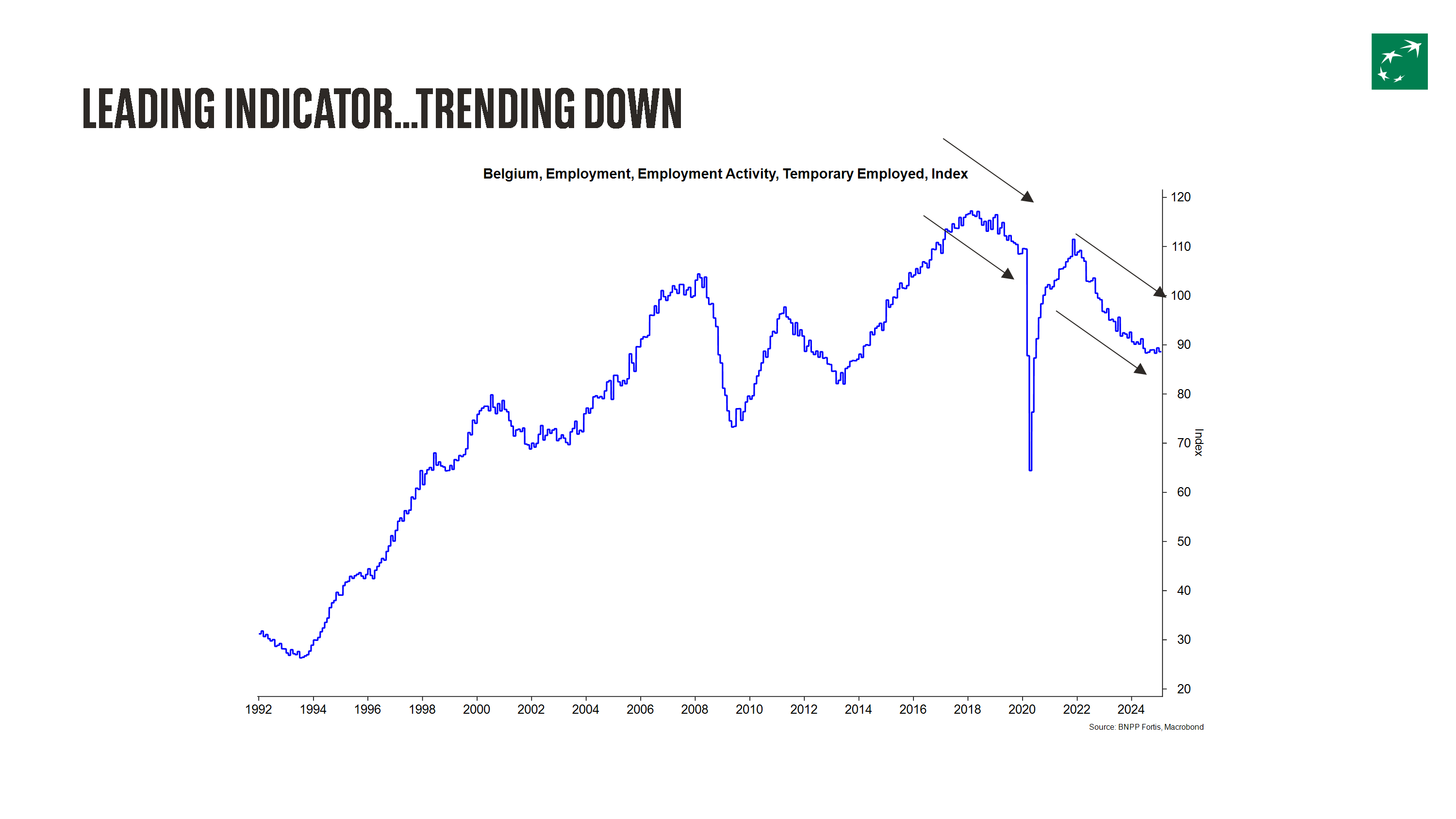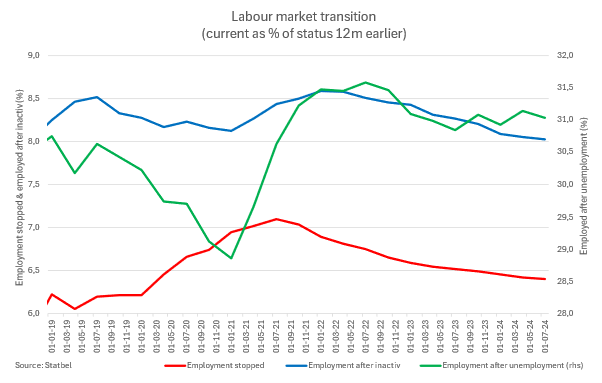A labour market in transition
3 min
The labour market continues to cool in Belgium. At the same time, unemployment rates are barely rising. 94% of people in work are still employed one year later. More unemployed people are making the transition to work, but the transition rate from inactivity to employment continues to grow. Are changes to unemployment benefits the solution?
Gradual cooling
The soft landing of the labour market continues. Job creation – the increase in employment opportunities for the self-employed and employees – peaked at nearly 100,000 jobs in the first three months of 2022. Since then, the labour market has cooled sharply. Between October and December last year, just 3,300 jobs were added.
The Federgon temporary employment index has been declining since 2018, interrupted only by the Covid-related lockdowns. The unemployment rate remains stubbornly below 6%. This despite a temporary increase in fears of unemployment in the monthly survey conducted by the National Bank of Belgium among Belgian families. So, what’s going on in our labour market?
A changing world
Statbel publishes quarterly figures on labour market transitions. The Belgian statistical office does this by surveying the same respondents, at regular intervals, about their employment situation.
Statbel divides 15-74-year-olds into three groups: employed, unemployed and inactive. The latter group mainly consists of students and pensioners. For unemployed people, Statbel follows the IAB definition of unemployment: this means that people are currently searching for work and are also available for a job within two weeks.
The latest figures show that 94% of people who were employed in Q3 2023 were still in work a year later. Of the remainder, one-third (2%) became unemployed, and the rest (4%) left the labour market. To put this last figure into perspective: assuming you have a population of workers with a uniform age distribution between 20 and 65 years old, this means that more than 2% would reach retirement age each year. About half of the unemployed people in Q3 2023 were still unemployed one year later. A quarter made the transition to work, and the remaining quarter became inactive.
Labour market policy
The probability of termination of employment has remained fairly stable at around 6% in recent years, apart from a temporary peak during the pandemic and the lockdowns. For inactive people, the chances of finding a job within a year remain approximately the same, namely 8%. However, there was a slight improvement in the unemployed category. The probability of finding employment within 12 months increased slightly from just under 30% before the pandemic to an average of more than 31% in the most recent figures.

The new government is now focusing on this group, among others, by making changes to unemployment benefits. They must be higher for those who are temporarily unemployed and lower for those who have not returned to work after two years. A popular policy point, which, according to a recent survey, is endorsed by three-quarters of the Flemish population*.
This was not an easy task, as became clear when the Di Rupo government attempted to enforce something similar in 2012. In a study, the National Employment Office reflected on '10 years of increased degressivity of unemployment benefit'. The conclusion? No impact on transitions to work. It did, however, result in minor savings, namely €148 million over a 10-year period. The study also identifies the main culprit of this (failed) measure: administrative complexity. The new government would therefore do well to tackle this first.
*As an interesting aside, when this author asked several Flemish citizens to estimate the number of unemployed people in Belgium, only a few were able to provide a rough idea.


